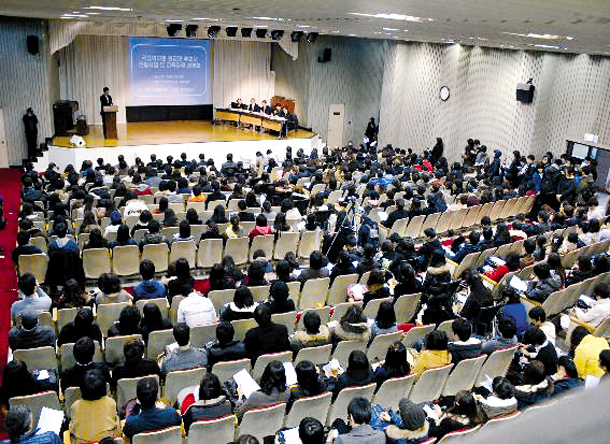Girl power abroad

The dominance of female diplomats started in Korea long ago. In 2005, more female candidates passed the foreign service examination than male applicants, and the ratio has been constantly rising.
Still, the latest results for this year, released on Friday, are particularly special. Among the 41 applicants who passed the examination, 70.7 percent, or 29, were female, which is the maximum quota. According to the scores, the portion of females should have been 76.3 percent. But because of the gender hiring target that forbids a certain gender from making up more than 70 percent of seats, three additional male candidates were accepted.
At this rate, 70 percent of new diplomats will be women for sure. Female candidates tend to have better foreign language skills, and at top universities, language and foreign affairs-related majors are mostly women. In fact, 26 out of 28 students in the department of foreign affairs at Seoul National University in 2008 were female. Just like the elementary school teacher, the diplomat is likely to be a profession associated with women.
In the United States, it was once rare for a woman to be appointed ambassador. The justification was that a male ambassador’s wife would play a diplomatic role, whereas a female diplomat would often be posted by herself and require additional staffing. The U.S. State Department often reflected wives’ activities in ambassador evaluations.
It was also not easy to send female diplomats to dangerous areas, and countries with gender discrimination felt insulted when a female ambassador was sent. After a lawsuit was filed with the U.S. State Department in 1976 for gender discrimination, the practice faded.
While gender discrimination in the diplomatic field has decreased, it does not mean all is well. Many female diplomats still go to assigned posts without family. Female diplomats are more vulnerable in dangerous regions, and gender discrimination is still serious in some Islamic countries. When Albright visited such regions, high officials there often left the country to avoid dealing with a female counterpart. If the dominance of female diplomats is an irreversible trend, we need to seek solutions to overcome these obstacles.
JoongAng Ilbo, Oct. 4, Page 31
*The author is an editorial writer of the JoongAng Ilbo.
NAM JEONG-HO










with the Korea JoongAng Daily
To write comments, please log in to one of the accounts.
Standards Board Policy (0/250자)